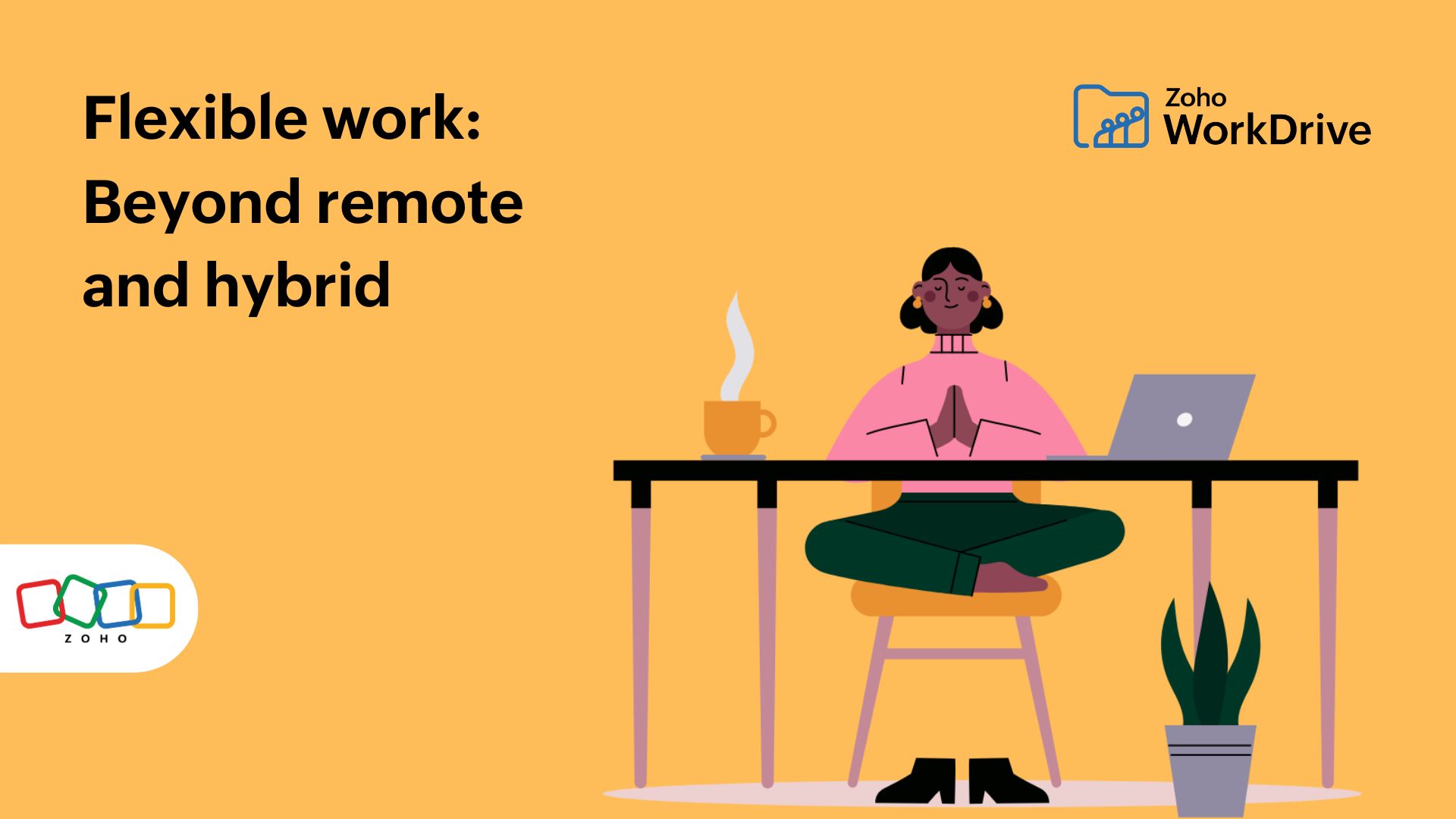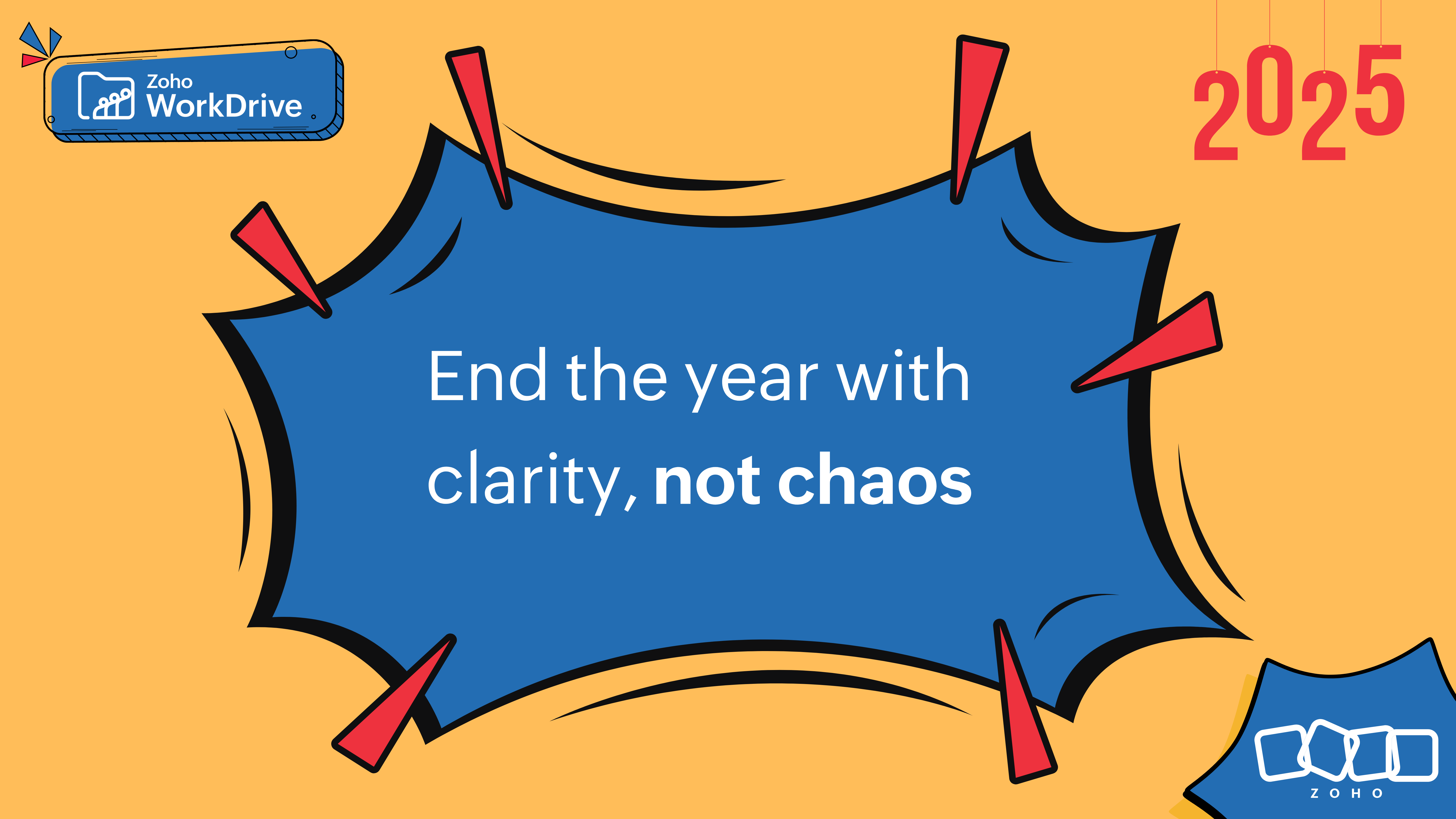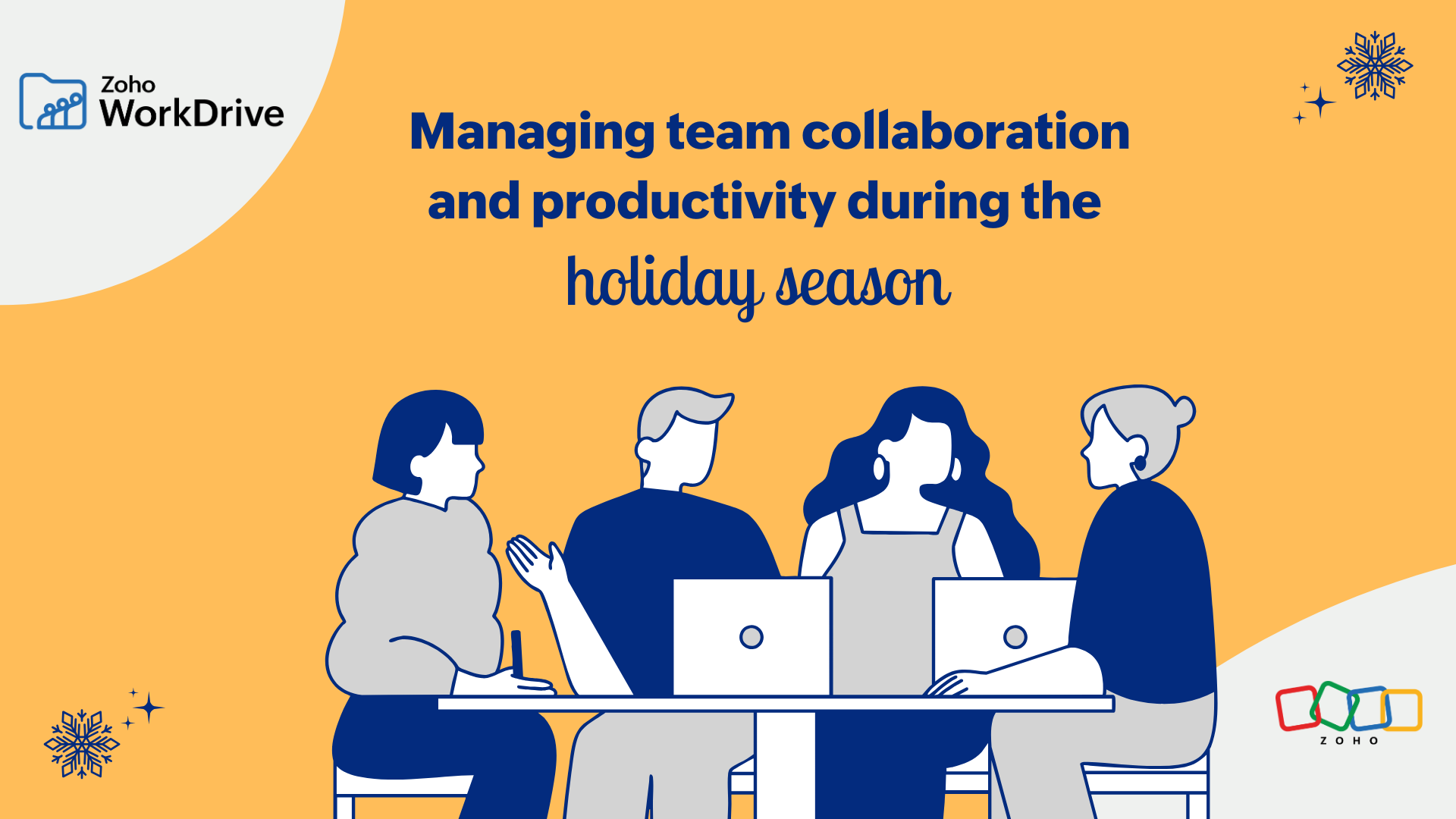- HOME
- Work Culture
- Flexible work part 3: Maintaining productivity with different styles of work
Flexible work part 3: Maintaining productivity with different styles of work
- Last Updated : February 20, 2024
- 503 Views
- 4 Min Read

In the last two articles in this series, we examined the fundamentals of flexible work and some of the relevant trends in workplace technology. In this post, we’ll dive into different types of flexible work styles, how they are each different, and how to keep employees engaged and satisfied on the job as flexible work becomes more common.
The different methodologies of flexible work
 If you think working remotely or on a hybrid schedule are the only approaches to flexible work, think again. We'll examine eight different ways to implement flexible work, including some that are older than the term “flexible work” itself. Here’s an overview of the most common flexible work arrangements and how they can be used to improve employee productivity.
If you think working remotely or on a hybrid schedule are the only approaches to flexible work, think again. We'll examine eight different ways to implement flexible work, including some that are older than the term “flexible work” itself. Here’s an overview of the most common flexible work arrangements and how they can be used to improve employee productivity.
Remote and hybrid work
How it works: All of us are familiar with remote and hybrid work at this point. Simply put, working remotely is when you’re doing work online outside of the office. Hybrid working mixes time in the office with remote work. A manager often designates specific days when employees need to be in the office and when they can go remote.
A common goal is to ensure that office spaces are utilized efficiently, with a combination of employees working onsite and remotely so they are not empty on some days and overcrowded on others. This approach helps companies make the most of their workspace while maintaining employee productivity.
How it supports employee productivity: Americans on an average take 27.6 minutes per day, while spending close to $8500 every year on their commute. One of the key things that remote and hybrid work help reduce is the loss of productive time and energy due to these painful commute times. This way, more work gets done while employees get to maintain balance between work and personal life.
Condensed workweeks
How it works: A typical workweek is about 40–45 hours spread over five days. A condensed workweek runs on the principle of packing the same number of hours into four, or even three, days of focused, productive work.
How it supports employee productivity: A condensed workweek might seem grueling in practice, but it actually provides a lot of flexibility because employees get entire days free. This helps people work on other projects, study, or devote time to personal matters and interests.
Flex-time
How it works: Not to be confused with condensed workweeks, flex-time setups still use a five-day workweek but let the employees choose their office hours.
How it supports employee productivity: Not everyone works at the same pace or does their best work at specific times of day. Adding flexibility to the general nine-to-five norm and letting employees choose when to start and end can empower team members to optimize their schedules for maximum productivity, while ensuring everyone can still find time to collaborate.
Part-time work
How it works: There’s nothing new about part-time work, but it is worth considering as part of our discussion of flexible work! While the threshold separating full-time jobs from part-time work differs from country to country, this is a common form of flexible work worldwide.
How it supports employee productivity: For employees, part-time work enables them to generate a steady income while allowing them to dedicate enough time to take care of personal responsibilities such as attending school or caring for a dependent family member. Employers benefit because they can utilize part-time roles with lower costs for work that doesn’t require a full-time professional.
Work sharing
How it works: Some companies avoid layoffs by allowing work sharing. This arrangement temporarily reduces the hours worked and pay instead of firing staff. This is either done by reducing the number of work hours in a day or using a shortened workweek.
How it supports employee productivity: While this isn’t the most productive arrangement, it’s a humane cost-cutting method that keeps trust between employee and employer intact.
Workations and sabbaticals
How it works: While they're not conventional examples of flexible work, workations and sabbaticals are arrangements that maintain the relationship between an individual and their organization while the employee is away from the workplace for an extended period of time.
How it supports employee productivity: A workation combines the effectiveness of remote work with the fun of a vacation. Many cities all over the world provide workation services for workers which includes a coworking space alongside hotel stays. Such an arrangement often suits people who work on a contractual or freelance basis, but it can also provide full-time office workers with the ability to relax and travel while keeping in touch with their workplace.
Sabbaticals are a type of extended leave during which the employee will often continue to be paid in full or in part. The reasons for taking such leaves could range from making time for higher education, side projects, focusing on mental health, or providing care for a parent, child, or other family member.
One app for all types of flexible work arrangements
Now that we’ve explored some of the most common ways to implement flexible work, we'd like to take a moment to explain how Zoho WorkDrive helps flexible teams stay connected and productive.
When we examined how changes in workplace tech have enabled different styles of work, it was clear that one of the key factors is the adoption of more apps, platforms, and other digital tools. On average, companies use more than 80 apps each year—187 at large organizations—and workers can spend hours each week toggling between different interfaces. WorkDrive helps address this challenge by providing a single source for all your flexible working needs.
Whether your team is working from the office, a coworking space, at home, or a mix of locations, work doesn’t need to be a tedious and confusing maze of standalone apps. With WorkDrive as your platform, you can keep flexible workers connected, make sure daily tasks run smoothly, and save everything in one place with integrated productivity, automation, and AI tools.


